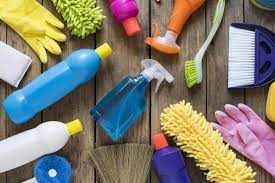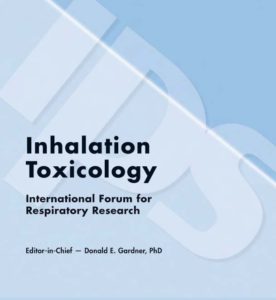Many household products we own and continuously buy are assumed to be safe, but that’s not always the case. Here’s a look at toxins and chemicals that may be present in common household items.
2-Butoxyethanol in Multipurpose Cleaners
This is a common ingredient in many windows and kitchen cleaners, as it gives these products their signature sweet smell. However, 2-butoxyethanol can cause a variety of health problems, from throat irritation to Liver and kidney damage. The EPA has deemed this ingredient safe for human use as long as you’re using the cleaners it’s often found in in a well-ventilated place. Unventilated areas cause 2-butoxyethanol to build up in the air and cause these problems.
A safer alternative would be to use vinegar and baking soda as a cleanser. You can also add natural essential oils, such as lemon or eucalyptus for fragrance.
Formaldehyde in Furniture
Formaldehyde is a common chemical used in the manufacturing process when making pressed-wood products, like those used to make furniture and paneling. It becomes a gas at room temperature, which can lead to health problems such as:
- Throat, nose, and eye irritation
- Headaches
- Dizziness
- Coughing
- Certain types of cancer (long-term exposure)
One way to avoid exposure to formaldehyde is to choose furniture made with natural materials. It’s also a good idea to make sure that your home is well-ventilated to prevent the buildup of formaldehyde in the air.
Insecticides in Food
Insecticides are a type of pesticide (along with herbicides and fungicides), and they’re sprayed on crops to keep insects away. Unfortunately, when insecticides and other pesticides are sprayed on these plants, they leave a residue on the food that can still be present when the consumer buys it— and rinsing off produce doesn’t completely remove the residue. This is why many people choose to buy organic produce, which means naturally derived or no pesticides have been used on the crops. Many gardeners also choose to make their own natural pesticides for their plants.
If you don’t grow your own produce, the general rule of thumb is to buy organic fruits and vegetables that don’t have an edible peel or other protective covering (e.g., leafy greens, berries, tomatoes, potatoes, apples, etc.). Foods that are safe to eat that aren’t organic do have a thick, inedible peel (e.g., avocados, corn, pineapples, peas, melons, etc.).
Phthalates in Air Fresheners
Phthalates are found in air fresheners, dish soap, personal care, and any other product that is fragranced. Almost all products that have an artificial fragrance contain phthalates, and these are known endocrine disruptors. This means that they mimic hormones in the body, which can lead to a long list of health issues.
Because phthalates are typically found in fragranced products, it’s best to look for natural alternatives or products that don’t contain fragrance. Instead of air fresheners, try using essential oils in a diffuser, or even soy candles with cotton wicks. Many personal care products use essential oils to fragrance their products or use no fragrance at all.
Sodium Hydroxide in Hair Products
Also known as lye, sodium hydroxide is the main ingredient in many chemical hair-straightening products. It’s extremely corrosive, as it is also found in drain openers and oven cleaners. When it comes into contact with the skin it can burn, but hair straightening products have also been linked to cancer in the people that use them. However, this can be due to the many other harmful ingredients found in these hair relaxers.
Instead, look to mechanical ways of straightening hair, such as using a flat iron. Also, contact a product liability lawyer if you believe a chemical hair straightener causes your cancer.
Triclosan in Hand Soap
Triclosan is an antibacterial agent, which is why it’s often used in antibacterial hand soaps. While it’s classified as a probable carcinogen (cancer-causing agent), triclosan presents a bigger problem: it can promote the growth of drug-resistant bacteria. This means that it actually causes more harm than good regarding bacteria, and there’s also been a high concentration of triclosan discovered in water sources.
A better option would be to purchase hand soaps that don’t contain triclosan and have a shorter ingredient list overall. Hand soaps contain cleansing agents strong enough to remove/kill bacteria when used with warm water.
The bottom line is that you must read the ingredients of all the products you buy before purchasing them. It also helps to research because many ingredients are listed by their scientific name. Just because you can’t pronounce an ingredient doesn’t mean it’s a toxin



Be First to Comment